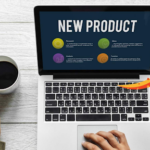Are you facing difficulty in ensuring consistent and high quality production? Do you want to explore strategies to meet stringent customer and regulatory requirements ?
Process of developing high quality is like “striking while the iron is hot”. This is where the importance of Advanced product quality planning is witnessed, it’s a structured method to ensure the product is manufactured efficiently, meeting the buyer and regulatory requirements.
With its origin in North America, APQP has become the highest standard to be met in the manufacturing field for high-volume production.
This blog will provide a complete guide about Advanced product quality planning and prevention to financial losses caused by faulty parts of processes.
What is APQP?
APQP, or Advanced Product Quality Planning, is a framework created for the development of new products in order to meet customer and regulatory standards.
It was initially created to cater the needs of automobile giants like GM, Ford, and Chrysler. The main objective was to prevent the manufacturing department from an unusual surprise that could hinder the production process and lead to significant losses.
Why is APQP Essential?
APQP is applied to integrate structured planning and precautionary measures in initial stages of product development.
It has an ability to nip the problems in the bud. In order to avoid costly errors and assure a smooth process to design mass productions. This advanced approach is crucial for the issue of faulty parts which can halt the entire production process.
5 Key Phases of APQP
APQP can be simplified into several key phases, each with specific milestones:
1. Planning
The planning phase acts as the foundation of the Advanced Quality Plan. It includes collection of all necessary inputs, such as client requirements, historical data about similar products, and the company’s goals. The outcome of this phase involves comprehensive plans that set clear objectives about design, quality, goals, preliminary process info and product related features. This stage sets a base for everything that follows, verifying that the project starts on the right track.
2. Product Design & Development
In this step, the rubber meets the road. The detailed plans from the initial planning phase are used as inputs to create the product design. This includes drafting FMEAs to identify possible failure modes and conducting DFM evaluations to verify products can be manufactured effectively. Prototypes are created, and material requirements are highlighted. This product is robust for product design and meeting all requirements.
3. Process Design & Development
This phase helps in the processing of the product. The outputs of the previous phases assist in designing the manufacturing process. This involves creating process flowcharts, conducting FMEAs process, evaluating the quality system and developing control plans. The ultimate goal is to follow the consistency required in the product quality.

4. Product & Process Validation
This phase acts as a proof in the pudding.Through pilot production runs, the product and process designs are tested. These tests are done to ensure all requirements are met. Comprehensive analysis identifies any issue that needs to be catered before full-scale production begins. This phase verifies that both product and the process are ready for the production.
5. Mass Production & Feedback
This phase is the time to go live. The detailed data gathered aids in launching mass production. Lessons learned during pilot runs are implemented to optimize the process and assure a smooth launch. This phase includes consistent feedback and continuous upgradation to maintain high quality standards.
Ensure your product’s success with advanced quality planning. Hire an expert to get the best product development services, navigate APQP, and optimize your design and production processes.
Concurrent Activities and Validation
In the APQP process, product design and process design go hand in hand. This concurrent engineering ensures that products can be produced and tested to meet the quality standards, cost, schedule and safety measures, starting with basic guidelines and progressing towards detailed production runs.
The concurrent approach is like killing two birds with one stone, as developing product and processing design simultaneously aids in addressing potential issues in the initial stage of the development cycle. This also saves both time and money but also making sure all the requirements are met.
The Customer Side: PPAP
Customers can observe the supplier’s followup to the APQP by requesting and approving deliverables through the production part approval process (PPAP). This verifies that all steps are followed and that the supplier is all set for mass production with following all phases and stages of the process.
PPAP is a “Trust but verify” mechanism. It enables the customers to ensure that suppliers have implemented the APQP process and prepared for mass scale production. This provides quality assurance and verification of meeting performance standards of final products.
Importance of Measurement System Analysis (MSA)
Maintaining quality throughout the manufacturing process is like a stitch in time saves nine. MSA is a crucial element of APQP, ensuring the measurement system is consistent and efficient. This prevents mistrust between customer and supplier data, and avoids costly disputes and quality issues.

MSA keeps a close check on the measurement system to accuracy and reliability. This includes consistent observation on repeatability, resolution and reproducibility. Due to a resilient measurement system companies can prevent issues down the line and maintain required standards.
Conclusion
APQP is considered an essential tool in numerous industries and crucial for any organization considering raising the bar for high volume production along with premium quality. By adopting this practice, companies can gigantically reduce quality and timing issues, ensuring that their products meet customer requirements and regulatory needs.
It’s about getting all ducks in a row by launching mass production with APQP assistance. By taking a structured approach to product development, companies can avoid chances of mistakes and assure smooth transition from design to production.
For tailored sourcing solutions that align with your premium standards, turn to BrandNewMD.
Contact us to streamline your product process and attain unparalleled support in quality and efficiency.








